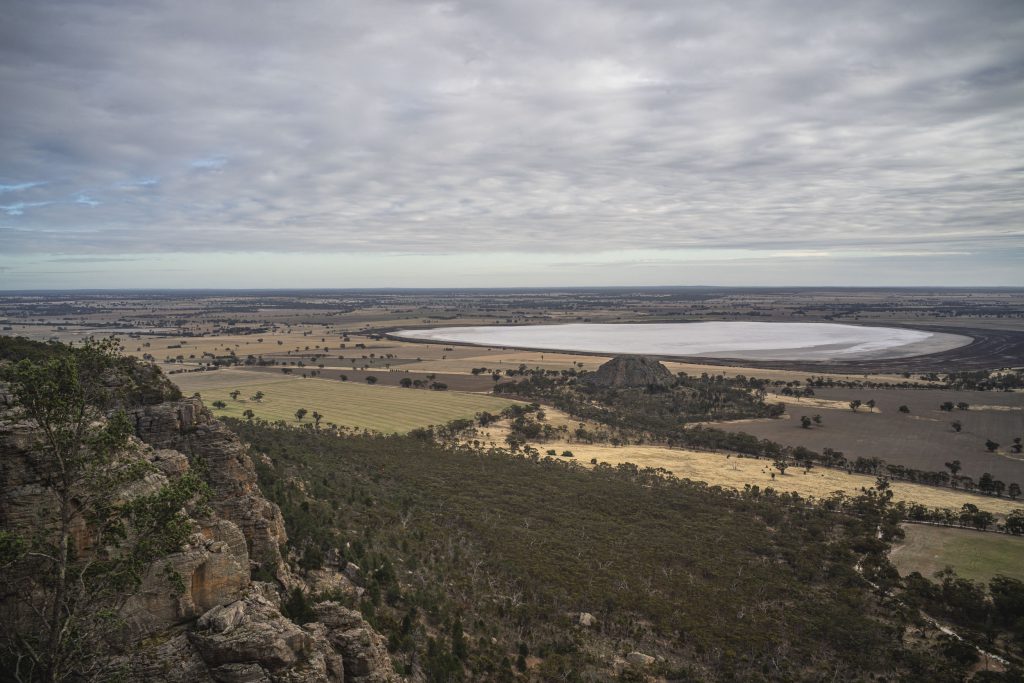We had decided to break our return trip to Encounter Bay by staying overnight at Natimuk so that we could briefly explore Mt Arapiles the following morning. I’d been there before photographing with the now disbanded Melbourne based Friends of Photography Group. On that occasion my large format photo-session wasn’t very successful.– disappointing in fact.
I realized that the Covid-19 pandemic has put a stop to the momentum of the Mallee Routes project. It now feels like I am starting all over again whilst living through a moment of intense upheaval; it is still a neoliberal era of that shapes us to be little isolated monads being bounced around by the flows of the global economic forces. If forming collectives, groups or associations is one response to overcoming being a tossed about monad, then my current interest is in publishing a book rather than having an exhibition.

I was also thinking about how the future photography in the Mallee Routes project would continue to need to be a DIY approach outside of academia. DIY since the federal funding is definitely moving away from funding artistic projects, especially a photographic ones, such as photographing the mallee country. By contrast, a literary culture, even though it is also suffering from federal funding cutbacks, is still in a much healthier condition than a photographic culture.
The photographic infrastructure has been crumbling of late –eg., the closure of the Australian Centre for Photography, Blender Gallery, Black Eye Gallery, Stills Gallery, and Edmund Pearce, to name a few. The increasing sidelining of photography by the art galleries, when coupled with the lack of public funding and support, necessitates the shift to photobooks and to printing on demand. Hence the explosion of texts about photobooks, and more recently, online coverage of photobooks over the course of the last twenty years. This shift to photobooks involves working far from the circuit of the gallery system,
Though some current photobooks often appear to be about flashy form and empty content, and drearily focused upon the self and little else, the phenomenon of photobooks has developed its own ecosystem or organized network that develops and regulates itself. Within this network the photobook is recognized as an art form in itself. My interest in the photo-text intersections usually encounters textophobia amongst photographers who are more comfortable with Martin Parr and Gerry Badger’s definition of the photobook in their trilogy The Photobook: A History (Phaidon, 2004, 2006, and 2014) as “a book—with or without text—where the work’s primary message is carried by photographs”. Photo-texts, ie., where the image and text co-exist, are deeply rooted in the history of photography.

